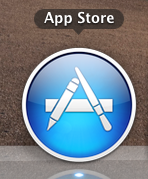The Benefits of Mac App Store and Sandboxing
 Apple stirred some controversy by announcing that they will require every application in the Mac App Store to run in an App Sandbox, much like iOS apps do on iPhone and the iPad.
Apple stirred some controversy by announcing that they will require every application in the Mac App Store to run in an App Sandbox, much like iOS apps do on iPhone and the iPad.
The App Sandbox would isolate the app from the entire operating system except for files and APIs which are explicitly allowed to the application. Apple calls these entitlements, and will provide only a limited number of them. Developers will have to request these entitlements to be granted to their app.
This requirement was to come into effect on November 1, but the controversy had Apple postpone it till March 2012 to give developers more time to prepare and adapt.
Security and Quality Control
There has been much discussion about whether this is a good thing or not. Apple is doing this to improve security since apps that run in a sandbox cannot affect the rest of the system should they become compromised. In a sense, it’s quarantine by default.
Some argue that the security benefits of this are limited so long as Apple allows installing software from outside of the Mac App Store, since such software would not adhere to Apple’s guidelines. On the other hand, denying the option to install from outside of the Mac App Store would have a lot of people reconsider owning a Mac since the Mac App Store, especially under its new and even stricter requirements, might not hold everything that a power user might need.
I think that the ability to install apps from outside of the Mac App Store doesn’t completely deny the security benefit of sandboxing Mac App Store apps. It means a larger percentage of apps on the system will be secured in this way, but perhaps most importantly, it gives users a clear choice.
Before the Mac App Store we could only install applications from packages downloaded from various web sites across the internet. While this option still remains, and I hope it remains indefinitely, the Mac App Store offers an option that you know holds only applications which have been curated by Apple for best security and quality.
This will be useful for everyone, even power users, because they can look to the Mac App Store first, and other sites only if they don’t find what they need there. It will be most useful for those who aren’t power users and likely won’t ever need what’s outside of the Mac App Store, as they can simply stick with it and be fairly confident that what they’re getting adheres to a certain standard.
For these reasons I think the requirements Apple poses for the Mac App Store are a good thing. So long as power users have the ability to get their apps from other sources, it’s actually a near perfect situation. There’s a level of flexibility, since you can still get apps anywhere, but there’s also a large repository of curated apps that meet a certain standard.
Quality control is probably the biggest reason, and the biggest benefit, of having an App Store to begin with. How well will it work depends on the quality control process that is used. A good example of a not-so-ideal process is, or at least was, the Android Market. Allowing pretty much anything to get in doesn’t exactly ensure that the Market holds only the stuff that meets a higher quality standard.
Monetizing App Development
There are other benefits, however, and they’ve become pretty evident over the last few months that the Mac App Store has been active. It has literally revived certain software projects by giving them a more realistic way of making money on their app. Case in point is my favorite code editor called Smultron, which was unmaintained until the Mac App Store came along, and is now sold for $4.99 through it.
Apple simply has access to a far greater number of customers than any specific app developer, and so they have the kind of leverage that they can use to help developers sell more apps. Of course, they take a cut (and a yearly fee) for that service, and said developers need to adhere to some rules. However, it seems that the end result is a potentially healthier apps market for the Mac, with a greater standard of quality.
The only disadvantage is that some apps that used to be free end up costing a little, like Smultron, and recently Growl (which now costs $1.99).
Of course, what Apple is doing with the Mac App Store is perfectly consistent with what we could call the “Apple Way”. They don’t shy away from maintaining control over any facet of the user experience, and they’ve proven that this can work. The key appears to be in balancing the desires and needs of the users with the interest of Apple as a for-profit corporation. So long as Apple can maintain this balance, they will be able to continue with this approach without alienating too many users.
I for one think that if they were to make the Mac App Store the exclusive place to install Mac apps that they would alienate too many users, most notably the loyal power users that have traditionally used Apple in various creative professions. So long as it is not the only choice, however, I see the Mac App Store as a mainly positive development.


Comments - No Responses to “The Benefits of Mac App Store and Sandboxing”
Sorry but comments are closed at this time.